
Tai Chi week
At Falmouth Hotel, Castle Beach, Falmouth, Cornwall, TR11 4 NZ
Monday 28th July to Friday 1st August 2025
Feng Shou Kung Fu week
Monday 4th to Friday 8th August 2025
Anmo Health and Massage week
Monday 11th to Friday 15th August 2025

At Falmouth Hotel, Castle Beach, Falmouth, Cornwall, TR11 4 NZ
Monday 28th July to Friday 1st August 2025
Monday 4th to Friday 8th August 2025
Monday 11th to Friday 15th August 2025

Qi is a super important idea in Chinese culture and traditional medicine. It’s the building block of everything – solids, liquids, gases, and even things like light and magnetism. Basically, the whole universe is made up of Qi.
When it comes to Tai Chi, we’re mainly talking about your own personal Qi. It’s like having a battery pack inside you that keeps your body, mind, and spirit energized. Qi is a big deal in ancient Chinese medicine, and it’s often called “life force” or “vital energy.” Every living thing has Qi flowing through it. In traditional Chinese medicine, Qi moves through the body along pathways called jingluo (经络) or meridians, which are connected to our organs. Qi is also stored in vessels throughout the body that act like energy buffers. When Qi flows smoothly, you’re healthy and balanced. But when it gets blocked or runs low, you can end up with physical, mental, and spiritual problems.
In Tai Chi, Qi is like the energy that powers your body’s movements. It flows through your body, creating a sense of harmony and balance. The whole point of practicing Tai Chi is to get your Qi flowing freely and in sync.
In traditional Chinese medicine, there are three super important substances called The Three Treasures: Jing, Qi, and Shen.
The three treasures are all connected, and each one affects the others. For example, when your Jing is strong and healthy, it can help build up your Qi and Shen. When your Qi is flowing smoothly, it can nourish your Jing and support your body’s health. When your Shen is calm and peaceful, it can help balance your Qi and Jing.
In Tai Chi, working on your Qi helps bring harmony and balance to all three treasures, leading to better health and well-being.
There are lots of ways to work on your Qi in Tai Chi. Here are some key things to remember:
Growing your Qi in Tai Chi can do wonders for your physical, mental, and emotional health. Here are just a few examples:
In a nutshell, growing your Qi is a key part of Tai Chi practice. It can improve your physical, mental, and emotional health and plays a big role in the overall benefits of Tai Chi. By focusing on relaxation, breath control, mindfulness, and visualization during your practice, you can boost your Qi flow and enjoy all the benefits that come with it.
If you’re interested in learning more about Tai Chi and how to grow your Qi, think about joining a Tai Chi class. A skilled instructor can guide you through the movements and help you understand the role of Qi in Tai Chi. With regular practice and dedication, you can tap into the power of Qi and enjoy all the amazing benefits Tai Chi has to offer.

A new Tai Chi club is opening at the BHASVIC Sixth Form College,
Dyke Road, East Sussex, Hove, BN3 6EG
Beginners are welcome.
Contact us for more details

Sticky Hands, also known as Yīfù shǒu (依附手) is a fundamental exercise in Lee Style Tai Chi that is taught to beginners as a way to introduce them to the principles of Tai Chi and to prepare them for more advanced techniques. While some may see Sticky Hands as a simple exercise, it is actually a complex and multifaceted practice that offers a range of benefits for practitioners.
One of the main aspects of Sticky Hands is the cultivation of sensitivity and connection with one’s partner. In the exercise, two practitioners stand facing each other and place their hands on each other’s forearms. They then begin to move their arms and bodies in unison, following each other’s movements and trying to maintain a constant connection. This requires a high level of sensitivity to the partner’s movements and intentions and helps to develop the ability to read and respond to subtle changes in body position and energy.
Another aspect of Sticky Hands is the development of internal energy or qi. By maintaining a constant connection with their partner, practitioners learn to circulate their energy and to use it to guide and control their partner’s movements. This involves the use of spiraling movements, which help to increase the flow of energy through the body and to connect the upper and lower body.
Sticky Hands also emphasizes the importance of timing and rhythm in Tai Chi. Practitioners must learn to move in sync with their partner, to maintain a constant flow of movement, and to execute techniques at the right moment. This requires a high level of concentration and focus, and helps to develop a sense of timing and rhythm that can be applied to other aspects of Tai Chi practice.
In addition to these physical aspects, Sticky Hands also has a number of mental and emotional benefits. The exercise requires practitioners to be present and focused, to let go of distracting thoughts and emotions, and to remain calm and centered even in the face of challenge or resistance from their partner. This level of mindfulness and emotional control can be applied to many different aspects of life, including work, relationships, and personal growth.
Overall, Sticky Hands is a foundational practice in Lee Style Tai Chi that offers a range of benefits for both beginners and more advanced practitioners. By developing sensitivity, connection, internal energy, timing, and emotional control, practitioners can gain a deeper understanding of themselves and their interactions with others, both in the context of Tai Chi and in daily life. As such, it is an essential part of a holistic Tai Chi practice that emphasizes both solo and partner work as equally important in line with the Taoist principle of yin-yang balance.
Nowadays more and more teachers are only teaching the forms and they neglect partner work. This flies in the face of everything our teachers taught us. Sticky Hands is an essential part of Tai Chi practice. It can help you develop sensitivity, awareness, and adaptability. By practicing sticky hands, you can improve your Tai Chi practice in the following ways:
While Tai Chi is a serious practice, it doesn’t have to be boring. In fact, Tai Chi can be quite humorous, especially when practicing sticky hands with a partner. Here are a few examples of the humor that can be found in sticky hands:
One of the essential principles of Tai Chi is the principle of neutralizing. Neutralizing is the process of redirecting an opponent’s force in a way that avoids a direct confrontation. The principle of neutralizing is essential in Tai Chi, as it allows us to use our opponent’s energy against them, rather than using our own energy in opposition to theirs.
Neutralizing involves the use of yielding and softness, rather than force and strength. To neutralize an opponent’s force, we must first yield and blend our movements with theirs. This means that we must not try to block or resist their force, as this would be a hard style technique that is not in line with Tai Chi’s soft style.
Yielding requires us to withdraw our body and give ourselves enough working space to then start to circle their arm or hand away from us, to avoid bodily contact. This approach allows us to create a space for ourselves that gives us more time to sense our partner’s intentions and movements.
The process of yielding allows us to avoid direct confrontation with our partner’s force, which is an essential aspect of the neutralizing principle. By yielding, we can sense our partner’s movements and intentions, which allows us to move with them seamlessly.
Once we have blended our hand movements with our partner’s, we can start to redirect their force if necessary. However, this redirection should not involve any forceful or aggressive movements. Instead, we should use our partner’s movements entirely and allow them to guide us.
This approach is in line with the Taoist principle of Wuwei, which emphasizes the idea of achieving our goals without force or resistance. In Tai Chi, this means allowing our partner to lead and guide us, rather than trying to redirect their movements or force them in a particular direction.
The paradox of this approach is that by relinquishing control entirely, we take absolute control. Rather than using trickery or subtle redirection, we allow our partner’s movements to guide us, which gives us the freedom to move in any direction we desire.
To use the principle of neutralizing effectively in Tai Chi, we must develop a deep sense of sensitivity and awareness. We must be attuned to our partner’s movements and intentions, allowing us to move with them seamlessly. This requires a significant amount of practice and dedication, as well as an understanding of Tai Chi’s principles and techniques.
In conclusion, the principle of neutralizing is a vital component of Tai Chi practice. It involves the use of yielding and softness to redirect an opponent’s force in a way that avoids a direct confrontation. Neutralizing requires us to relinquish control entirely and allow our partner’s movements to guide us, in line with the Taoist principle of Wuwei. To use the principle of neutralizing effectively, we must develop a deep sense of sensitivity and awareness, allowing us to move with our partner seamlessly and take absolute control by relinquishing control entirely.
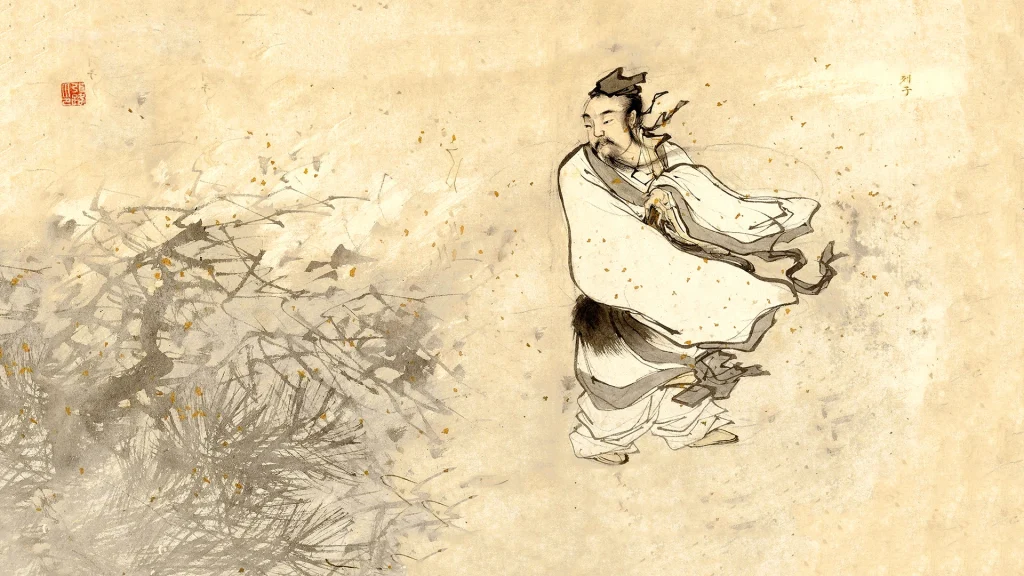
Wuwei (无为) often translated as “non-action,” is a fundamental concept in Taoist philosophy and has an important role in the practice of Tai Chi. While it may sound like doing nothing, wuwei is actually a way of acting without forcing or interfering with natural processes. In this blog post, we will explore the concept of wuwei and its significance in Tai Chi, drawing on the works of ancient Taoist philosophers such as Liezi, Zhuangzi, and Laozi.
At its core, wuwei is about letting go of our ego and allowing things to unfold naturally, without our intervention. It involves being in a state of awareness, so we can respond to situations appropriately without creating resistance or conflict. It’s not about being passive, but rather actively engaging with the world around us in a way that is aligned with the flow of nature.
According to Taoist philosophy, all things arise from the Tao, or the Way, which is the ultimate reality that transcends all dualities. The Tao is not something that can be described in words, but rather something that can be experienced through direct intuition. It is the source of all life and the underlying order of the universe. To live in harmony with the Tao, we must let go of our desires, judgments, and attachments, and allow ourselves to be guided by the natural order of things.
Wuwei is not just a philosophical concept, but a practical one as well. It can be seen in the way we move, breathe, and interact with others. In Tai Chi, wuwei is embodied in the practice of slow, flowing movements that follow the natural rhythms of the body and breath. The goal is not to force the movements or achieve a specific outcome, but rather to allow the movements to emerge spontaneously from within.
To illustrate the concept of wuwei, let’s look at some stories from ancient Taoist philosophers.
In the Liezi, there is a story about a butcher named Ding. One day, a prince came to Ding’s shop and asked him to cut up an ox. Ding did so with ease, using his knife as if it were an extension of his hand. The prince was amazed and asked Ding how he was able to cut up the ox so effortlessly. Ding replied, “I don’t look at the ox with my eyes, but with my mind. My mind tells my hand where to go, and the knife follows. I let go of my ego and allow the natural order of things to guide me.”
This story demonstrates the idea of wuwei as effortless action, where the mind and body are in harmony and work together seamlessly. By letting go of his ego and allowing the natural order of things to guide him, Ding was able to perform his task with ease and skill.
In the Zhuangzi, there is a story about a man named Cook Ding who was able to chop up an ox with ease. When asked how he was able to do it, Cook Ding replied, “I follow the Tao, not my own preferences. I move with the flow of things, not against them. When I first started chopping up oxen, all I could see was the ox. Now, I see the spaces between the joints and know where to cut.”
This story illustrates the idea of wuwei as following the natural order of things, rather than trying to impose our own will on the world. By focusing on the spaces between the joints, Cook Ding was able to see the natural structure of the ox and work with it, rather than against it.
In Tai Chi, wuwei is embodied in the practice of slow, flowing movements that follow the natural rhythms of the body and breath. Rather than trying to force the body into a specific position or movement, Tai Chi practitioners allow the movements to arise spontaneously from within. By doing so, they cultivate a deep sense of awareness and sensitivity to the natural flow of energy within the body and the environment.
Through regular practice of Tai Chi, practitioners can develop a sense of ease and relaxation in their movements, which can help reduce stress and promote overall well-being. Tai Chi has been shown to have a range of health benefits, including improving balance, flexibility, and cardiovascular health, as well as reducing symptoms of anxiety and depression.
Research has also shown that Tai Chi can help reduce inflammation in the body, which has been linked to a range of chronic health conditions, including cardiovascular disease, diabetes, and cancer. In one study, participants who practiced Tai Chi regularly for 12 weeks showed a significant reduction in levels of inflammation compared to a control group 4.
In addition to the physical benefits, Tai Chi also has a meditative aspect, which can help cultivate a sense of inner peace and calm. By focusing on the movements and the breath, practitioners can quiet the mind and enter a state of deep relaxation. This can be particularly beneficial for those who suffer from anxiety or stress-related disorders.
While Tai Chi is a powerful practice for cultivating wuwei, the principles of non-action can be applied to all areas of our lives. By letting go of our ego and allowing things to unfold naturally, we can reduce stress and create a greater sense of harmony and balance.
One way to incorporate wuwei into daily life is to practice mindfulness. Mindfulness involves being fully present in the moment, without judgment or distraction. By cultivating awareness of our thoughts, feelings, and surroundings, we can learn to respond to situations with greater clarity and equanimity.
Another way to cultivate wuwei is to practice surrender. Surrender involves letting go of our attachment to outcomes and allowing things to unfold as they will. Rather than trying to control every aspect of our lives, we can learn to trust in the natural order of things and allow ourselves to be guided by it.
Finally, it’s important to cultivate a sense of playfulness and curiosity in our lives. By approaching situations with a sense of openness and curiosity, we can learn to let go of our expectations and allow ourselves to be surprised by the unexpected.
Wuwei is a fundamental concept in Taoist philosophy and has an important role in the practice of Tai Chi. It involves letting go of our ego and allowing things to unfold naturally, without our intervention. In Tai Chi, wuwei is embodied in the practice of slow, flowing movements that follow the natural rhythms of the body and breath.
Through regular practice of Tai Chi, practitioners can develop a deep sense of awareness and sensitivity to the natural flow of energy within the body and the environment. This can help reduce stress and promote overall well-being, as well as cultivate a sense of inner peace and calm.
While Tai Chi is a powerful practice for cultivating wuwei, the principles of non-action can be applied to all areas of our lives. By letting go of our ego and allowing things to unfold naturally, we can reduce stress and create a greater sense of harmony and balance. By practicing mindfulness, surrender, and playfulness, we can cultivate a greater sense of ease and relaxation in our lives.
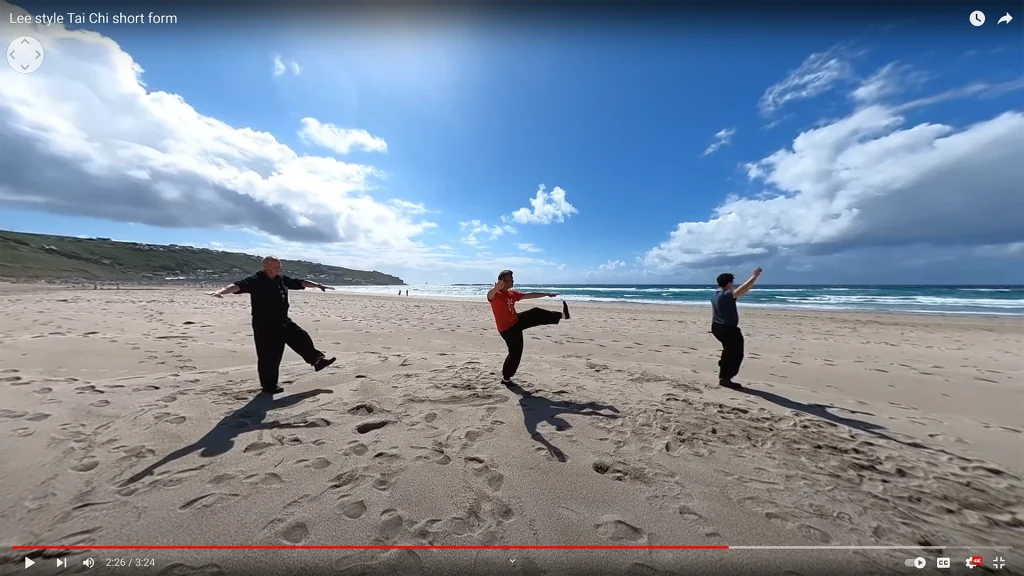
In recent years, Tai Chi has become an increasingly popular form of exercise worldwide, and for good reason. This ancient Chinese practice has been shown to have numerous health benefits, including stress reduction and relaxation. In this blog post, we will explore the science behind these benefits and provide references to peer-reviewed studies from reputable sources in China, around the world, and in the UK.
Tai Chi, also known as Tai Chi Chuan, is a traditional Chinese martial art that involves slow, fluid movements and deep breathing. It was originally developed as a form of self-defense, but over time, it has evolved into a form of exercise that is practiced for health and wellness purposes. Tai Chi is often described as a moving meditation, as it requires focus and concentration to perform the movements correctly.
Stress is a common problem in today’s fast-paced world. It can lead to a variety of physical and mental health problems, including anxiety, depression, and cardiovascular disease. Tai Chi has been shown to be an effective way to reduce stress and promote relaxation, making it a valuable tool for maintaining overall health and wellbeing.
One study conducted in China found that practicing Tai Chi for just 12 weeks resulted in significant reductions in perceived stress and improvements in overall mood among participants 1. Another study conducted in the UK found that Tai Chi was effective in reducing both state and trait anxiety in a group of healthy adults 2.
The calming effects of Tai Chi may be due in part to its focus on deep breathing and relaxation techniques. When we are stressed, our breathing becomes shallow and rapid, which can increase feelings of anxiety and tension. By practicing deep breathing and relaxation techniques, Tai Chi can help to counteract these effects and promote a sense of calm and relaxation.
In addition to its mental health benefits, Tai Chi has also been shown to have numerous physical health benefits. Some of these benefits include improved balance and coordination, increased flexibility and range of motion, and reduced pain and inflammation.
Falls are a common problem among older adults, and they can lead to serious injuries such as hip fractures. Tai Chi has been shown to be an effective way to improve balance and reduce the risk of falls in older adults. One study conducted in China found that a 12-week Tai Chi program resulted in significant improvements in balance and reduced the risk of falls among participants 3.
Tai Chi involves slow, fluid movements that require a wide range of motion. This can help to improve flexibility and range of motion, which is especially important for older adults who may be at risk for mobility problems. One study conducted in the UK found that a 12-week Tai Chi program resulted in significant improvements in flexibility and range of motion among older adults 4
Tai Chi has been shown to be effective in reducing pain and inflammation in a variety of conditions, including osteoarthritis, fibromyalgia, and chronic low back pain. One study conducted in the US found that a 12-week Tai Chi program resulted in significant reductions in pain and stiffness among participants with knee osteoarthritis 5. Another study conducted in Australia found that a 10-week Tai Chi program resulted in significant reductions in pain and improved physical function among participants with fibromyalgia 6.
In conclusion, Tai Chi is a valuable tool for promoting both physical and mental health. Its slow, fluid movements and deep breathing techniques make it an effective way to reduce stress and promote relaxation. Additionally, Tai Chi has been shown to improve balance and coordination, increase flexibility and range of motion, and reduce pain and inflammation in a variety of conditions. If you are looking for a low-impact exercise that is beneficial for both your physical and mental health, Tai Chi may be a great option for you.
It’s important to note that while Tai Chi is generally considered safe for most people, it’s always a good idea to check with your doctor before starting a new exercise program, especially if you have any pre-existing health conditions or concerns.
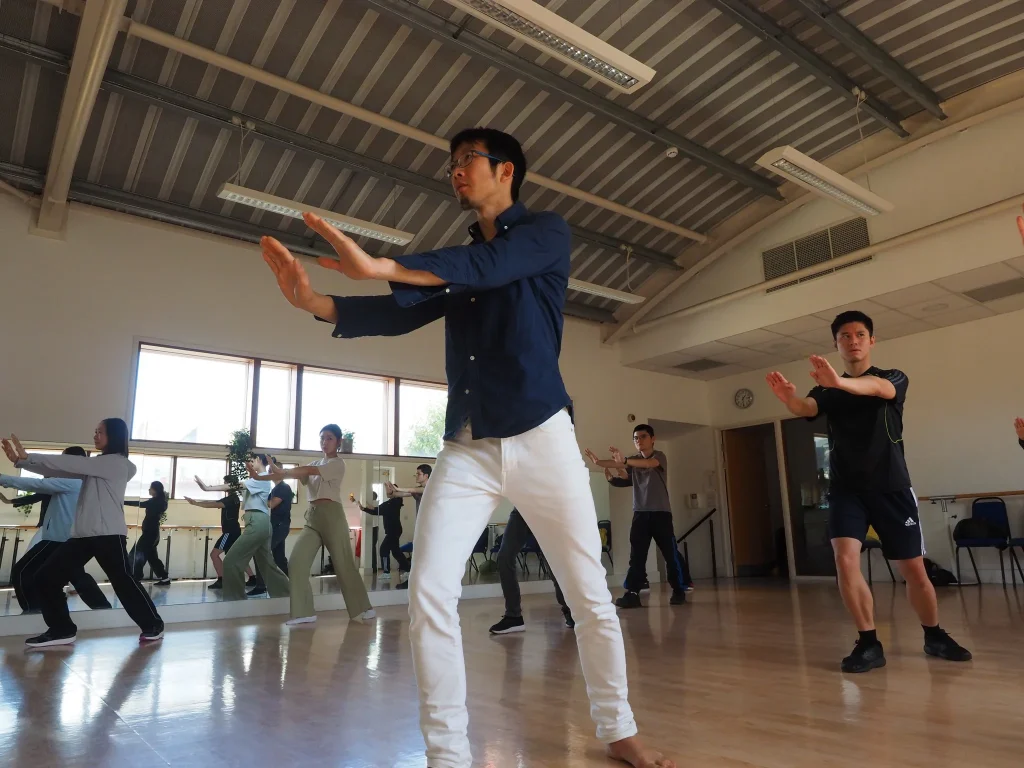
Tai Chi is a martial art and exercise form that originated in ancient China that has become increasingly popular worldwide due to its numerous health benefits. It involves slow and gentle movements that promote the cultivation and circulation of Qi, the vital energy that flows within the body. This blog post will explore the practice of Tai Chi, its benefits, and its philosophy, focusing on the principles of ancient Chinese medicine and Taoist philosophy. It is a practice that emphasizes the integration of mind, body, and spirit. Its slow and gentle movements, performed in a continuous and fluid manner, stimulate the circulation of Qi, which nourishes the internal organs and promotes health and wellbeing. Tai Chi is based on the principles of Yin and Yang, which represent the complementary forces of the universe.
Tai Chi works by regulating the flow of Qi and blood in the body. The slow and gentle movements stimulate the circulation of Qi and blood, which nourish the internal organs and promote health and well-being. Tai Chi also strengthens the muscles, tendons, and bones, improves posture and balance, and enhances flexibility and range of motion.
Tai Chi has numerous health benefits, including reducing stress and anxiety, improving cardiovascular health, reducing chronic pain, and improving immune function. Tai Chi can also enhance mental clarity, emotional stability, and overall quality of life. Regular practice of Tai Chi can lead to a healthier and happier life.
Tai Chi is deeply rooted in Taoist philosophy, which emphasizes the importance of balance, harmony, and naturalness. The concept of Wu Wei, or effortless action, is central to Tai Chi practice. By practicing Tai Chi, individuals learn to move with naturalness and ease, and to respond to their environment with fluidity and adaptability.
In Tai Chi, Qi refers to the vital energy that flows within the body. Qi is considered the foundation of health and vitality in ancient Chinese medicine. Tai Chi promotes the cultivation and circulation of Qi through slow and gentle movements, leading to improved health and wellbeing.
Tai Chi is considered an internal art because its practice emphasizes the cultivation of Qi and the integration of mind, body, and spirit. The internal arts of China are practices that focus on the cultivation of Qi, such as Tai Chi, Qigong, and Bagua. These practices promote health, vitality, and harmony within the body and mind.
In conclusion, Tai Chi is a holistic practice that promotes health and wellbeing through the cultivation and circulation of Qi. Its principles are deeply rooted in Taoist philosophy and the ancient Chinese medical tradition. By practicing Tai Chi, individuals can improve their physical, mental, and emotional health, leading to a happier and healthier life. If you are interested in learning Tai Chi, come and join us at the Cardiff class.
Chris and James, instructors from our Associated clubs in Cornwall, were invited to BBC Radio Cornwall studios in Truro to talk to Tiffany Truscott about Tai Chi, how they got into it, what it is, and how it has affected their lives.
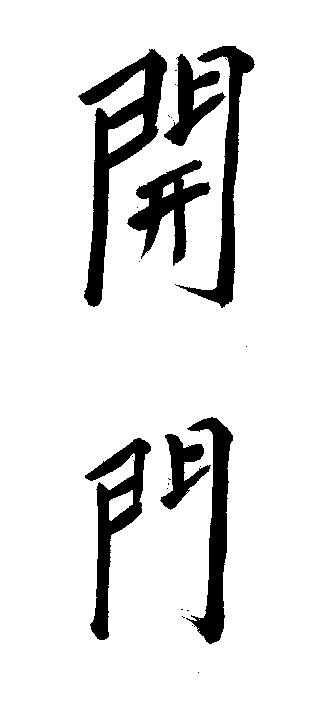
Kai Men 开门 means ‘open the door’, it is our Lee style of Qigong.
In one sense Kai Men means opening energy gates in the body which govern the flow of internal energy and let it flow around the system. In another sense opening the door means becoming more aware of what is going on internally and taking control of the processes you become aware of.
Qigong literally means energy work or cultivating the life force. We do Kai Men exercises at the beginning of our Tai Chi class as part of the warming-up process. The class has three sections, the first part is activating the internal energy, then in the middle of the class, we circulate that energy, and towards the end, we are gradually focusing the energy and concentrating it. The process is sometimes likened to the process of forging a sword. When the metal is first made from the base ore it is brittle and so the smith takes it and heats it, beats it on the anvil, then quenches it in water, then the process is repeated. Heating, beating, quenching. The effect is to compact the particles of metal in the sword and remove any impurities so making a very strong and flexible blade.
Kai Men is sometimes called Taoist Yoga because it has similarities with Indian Yoga which is also working with life energy. There are differences in that K ai Men exercises are performed in a continuous motion, we never hold the postures. Qigong involves practical exercises which can help us to regulate and build up a store of energy in the body a bit like the battery in your mobile phone. Sometimes the charge gets so low that the screen goes dim and you only have basic functions so it has to be taken offline for a while and plugged into the charger to get it back to its optimum efficiency.
According to ancient Chinese medicine, the lungs are considered one of the vital organs of the body and play an important role in the body’s energy system. In traditional Chinese medicine, the lungs are responsible for circulating the body’s Qi or life energy, as well as the body’s defensive energy known as Wei Qi. When the body is in a state of balance and harmony, Wei Qi is strong and can effectively ward off external pathogens. However, if the body’s energy becomes imbalanced, Wei Qi may become weak, leaving the body vulnerable to invasion by external pathogens and increasing the risk of illness.

Kai Men exercises have two sections, the first part involves breathing in time with movements of the limbs and torso. Each exercise is performed from a particular stance which is named after animal movements. The breathing is usually in through the nose and out through the mouth. Breathing is very important in cultivating life force because it is the most immediate way of getting energy into the body. Most people use at most forty percent of their lung capacity so we use deep breathing to expand the lungs and increase the strength of the breathing action. Deep breathing also gives the internal organs a gentle massage and workout and this is very important because they are primarily responsible for generating energy in the body, like the engine in a car. Qigong is known as an internal form of exercise as it works on the core of the body more whereas many other forms of Western exercise are classified as external exercise which develops the muscles. The second part of every Kai Men exercise is the extension when we stretch the movements a bit further and only emphasize natural breathing.
Qigong exercises have been practiced in China since ancient times, archaeological evidence from tombs dating back to 168 BC show people in various postures that can still be recognized in today’s exercises. The word Qi does not have any direct translation into English but is usually translated as life-force or internal energy. Another way of looking at it is vitality, sometimes you feel full of energy and purpose, other times you are run down and feeling low. Qigong exercises increase the flow of life force around the energy meridians which are connected to the internal organs. The organs supply the energy like a power station, the meridians are like the wires which connect the power station to your house.
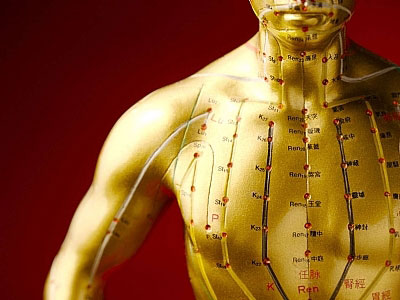
Qigong is based on the same theory as Chinese medicine which is a holistic system, this means it works both on the physical level and also influences mental health and emotions. Increasing energy flow around the body is important on the physical level because it is this energy that supplies the day-to-day motive needs of the body, supplies heat to keep you warm, and enables the muscles to work so you can move around, it also supplies the mind with the energy you need for cognition thinking and perception. Energy is generated by the internal organs but also has to be transported around the system to supply every part of your body with the nutritive and regenerating energy necessary to keep the body young and healthy and working at its optimum efficiency. Every part of your body is constantly regenerating itself, you cut your finger and it heals over, you break a bone, it mends, it is the Qi or life force and the quality and flow of it that determines how quickly you will heal. At certain points along the network of meridians are doors or gates which can open and close to increase or shut down the flow of energy.
In Chinese Medicine, there is an analogy that likens the energy system in the body to the rivers and lakes in the landscape. Water falls on the mountain slopes and then finds its way into streams and at certain places, the water accumulates as a reservoir. A river enters the reservoir and a river leaves it and takes the water down to the sea. If too much water leaves the reservoir and not enough is coming in then eventually this reservoir will run dry, the amount of water entering and leaving the reservoir can be controlled with sluice gates. The farmer can open the gates at times of drought to let some of the stored water out to irrigate the crops, at times of flooding he can close the gates to build up the store of water for later use. In this way, the distribution of water to the crops can be kept even and the plants get the supply they need on a regular and timely basis. There are special energy meridians in the body known as extraordinary vessels which are not connected directly to the organs. Instead, they act as buffers and store energy which can then be used in times of need. These reserves of Qi in the body are especially important not just for rejuvenating the body but in times of illness when the energy system needs boosting to fight off diseases like if you become infected with a virus for example.